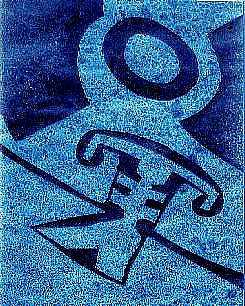

|
The Macrobiotic Way is a school of thought and action, based upon the use of natural (non-synthetic)
materials in our fabrics, our homes and our food.
Even many naturally occurring ingredients can be hazardous to our health (e.g. hemlock, opium, sodium, lead); therefore, to determine the correct applications for natural materials, they are classified in accordance with the "Unique Principle". The Unique Principle was introduced to the Western world by George Ohsawa (Nyoichi Sakurazawa / Yukikazu Sakurazawa), a Japanese businessman, teacher and writer. As a teenager, Ohsawa was diagnosed with tuberculosis and was deemed to have little chance of surviving, by the Japanese medical doctors. However, by following the teaching of Sagen Ishizuka, a natural healer who was famous in Japan near the beginning of the 20th century, Ohsawa was able to heal himself. He traveled from Japan to Europe in 1929 and, soon thereafter, began teaching the Unique Principle. The "Principle", itself, employs the ancient oriental practice of Yin and Yang theory, to determine the quality of the materials in our universe. Though all aspects of the environment are important in the macrobiotic way of thinking, there is a special emphasis on food. This is because the food we eat becomes our bodies. Food turns into us. Therefore, special attention is paid to the quality of that portion of the environment which we consume. All things, including food, can be classified into a "more yin" or a "more yang" category. Generally speaking, yin (pronounced 'yeen') foods tend to be more sugary and/or watery and/or cold and/or tropical in origin. Yang (pronounced 'yahn') foods tend to be more meaty and/or dry and/or cooked and/or polar, in nature. Very yang food (e.g. mammal meat, poultry, table salt, ginseng) is generally avoided, as well as very yin food (e.g. sugar, euphoric drugs, strong alcoholic beverages). These foods are often called "extreme food". Balanced foods, which are not so "extreme", compose the standard macrobiotic diet. Cereal grains, reside at the balance between yin and yang, but even they are involved in the yin and yang classification (everything has yin and yang components; nothing is "neutral"). Therefore, whole grains and their derivatives (pasta, bread, hominy) are considered the mainstay of the diet. (No ancient civilization has ever been built that did not include a grain-based diet!) Along with whole grain, the diet is comprised of bean and bean products, a wide variety of vegetables, kelp and other sea vegetables, many excellent soups and condiments, nuts and occasional fish and fruit. Macrobiotic people pay close attention to their personal condition and they adjust the yin & yang quality of their diets, as required to maintain a healthy life and happiness. In addition to classification by type, the quality of the food is also considered. Vegetables should be organically grown. Fish and sea vegetables should be harvested from deep, clean water or from coastal areas located far from city & industrial pollution. Also, genetically engineered foods, even grains and beans, are to be avoided (disturbed ki and more extreme). Organic food grown from traditional, open-pollinated seed is best. To some individuals, this entire process may sound unlikely or farfetched. In that case, it would be important to know that the Macrobiotic diet has healed thousands of individuals; some, from very life threatening illnesses, such as cancer & heart disease and has enabled diabetics to wean themselves off of insulin. There are many well documented case histories of people who have healed themselves through macrobiotic procedures. Macrobiotics is not a religion. It is a very valuable tool that is being used to improve health, clarify thinking, sharpen the senses and elevate consciousness, by thousands of individuals in the United States and around the world. This is not to say that one must be "macrobiotic" in order to be spiritual, compassionate or wise. We live among multitudes of loving, thoughtful people, who are of boundless value. This guide is dedicated to those individuals who teach and provide macrobiotic services. |

|
|
© The Blooming Grove Studio. Serving you on the net since June, 1996. |